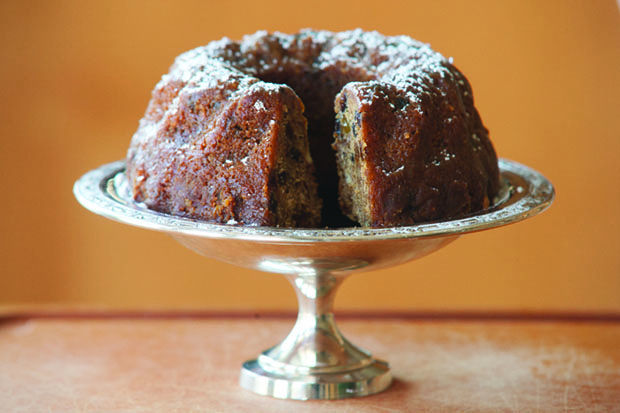A fruitcake update for Tu B’Shevat
Published January 2, 2014
Tu B’Shevat celebrates the beginning of the growing season. It also provides an opportunity to examine that most mysterious of holiday desserts: the traditional, and oft maligned, fruitcake.
You may know someone who truly enjoys fruitcake. I don’t. Fruitcakes have been the butt of jokes for decades. Eating a slice may simply be something folks endure for tradition’s sake. Because fruitcakes are soaked in rum or brandy, they never go bad. Ever. As a result, their long shelf life allows them to torment future generations through the magic of re-gifting. Indeed, there are heirloom fruitcakes more than a century old. If your family has one, perhaps you should contact Sotheby’s to arrange what could be a lucrative auction.
So what’s the connection between fruitcakes and Tu B’Shevat? The holiday (starting this year at sundown on Jan. 15 and ending the evening of Jan. 16) reminds us to appreciate the environment, and do something to help preserve it, planting trees, for example. We are also urged to partake in the seven species mentioned in Deuteronomy: wheat, grapes, figs, pomegranates, dates, barley, and olives. A Tu B’Shevat Seder is one way to sample all seven. Another, however, could be a fruitcake, one that incorporates all seven species in a single bite. Just think: it could be the perfect ending to your festive holiday meal.
I imagined two major challenges to creating such a recipe. First, I wondered whether the term “great fruitcake” was an oxymoron. For such a cake to be appealing to my tastes, it would have to be light rather than dense, sober rather than drunk, and packed with wholesome dried fruits rather than those traditional neon impersonators.
The second challenge was finding a way to get olives and barley, two savory ingredients, into my sweet fruitcake. Olives, as I reminded myself, have by-products. Just as I would substitute golden raisins for the required grapes, I could replace some of the butter in this recipe with olive oil.
Barley, however, offered a different set of challenges. As a grain, it absorbs more liquid than wheat, and unlike the neutral flavor of wheat, it imparts a strong, nutty flavor. Then there is the issue of availability: I couldn’t find barley flour anywhere. While I could cook pearled barley, I didn’t like the sticky texture it might give the cake.
Then I recalled that I had begun to substitute barley flakes (which are inexpensive and available in the bulk foods aisle at Whole Foods) for a quarter of the oat flakes in my homemade granola as a way of upping nutritional value. The nutty flavor of the barley combined quite nicely with the other nuts I was using in the granola. Even so, I was concerned that barley flakes would alter the texture of a cake. To break them down, I ground them in my food processor. While I didn’t exactly get barley flour, I did get chopped barley flakes. And they worked great!
The resulting fruitcake was delicious. As proof, I offer the testimony of my sister Bobbie, whose dislike of fruitcake exceeds even mine. She was in town for a visit a day after I pulled my fruitcake out of the oven. Reluctantly, she agreed to try a bite—and tiny bite—just to please me.
“Wow,” she said, eyebrows raised, “this is a fruitcake? It’s amazing. I’ll take a slice.”
In short, these seven biblical species are meant to be enjoyed together. In fact, they make such a winning combination that I was inspired to create a second Tu B’Shevat treat from them. I call it Granola Morsels, and include the recipe above.
Have a lovely, sweet holiday.
Margi Lenga Kahn is the mother of five and grandmother of five. A cooking instructor at the Kitchen Conservatory, she is currently working on a project to preserve the stories and recipes of heritage cooks. She welcomes your comments and suggestions at [email protected].















